1.AIC 只需两个 inputs ( LLF , numParams)
2.BIC 需要三个 inputs (LLF , numParams , numObs)
3.aicbic.m 在 garch toolbox 工具箱,AIC,BIC 都容易计算,重点是求 LLF.
*******************
function [AIC , BIC] = aicbic(LLF , numParams , numObs)
%AICBIC Akaike and Bayesian information criteria for model order selection.
% Given optimized log-likelihood function (LLF) values obtained by fitting
% models of the conditional mean and variance to a univariate return series,
% compute the Akaike (AIC) and Bayesian (BIC) information criteria. Since
% information criteria penalize models with additional parameters, AIC and
% BIC are model order selection criteria based on parsimony. When using
% either AIC or BIC, models that minimize the criteria are preferred.
%
% [AIC , BIC] = aicbic(LLF , NumParams , NumObs)
%
% Optional Inputs: NumObs
%
% Inputs:
% LLF - Vector of optimized log-likelihood objective function (LLF)
% values associated with parameter estimates of various models. The LLF
% values are assumed to be obtained from the estimation function GARCHFIT,
% or the inference function GARCHINFER. Type "help garchfit" or "help
�
% garchinfer" for details.
%
% NumParams - Number of estimated parameters associated with each value
% in LLF. NumParams may be a scalar applied to all values in LLF, or a
% vector the same length as LLF. All elements of NumParams must be
% positive integers. NumParams may be obtained from the function
% GARCHCOUNT. Type "help garchcount" for details.
%
% Optional Input:
% NumObs - Sample sizes of the observed return series associated with each
% value of LLF. NumObs is required for computing BIC, but is not needed
% for AIC. NumObs may be a scalar applied to all values in LLF, or a
% vector the same length as LLF. All elements NumObs must be positive
% integers.
%
% Outputs:
% AIC - Vector of AIC statistics associated with each LLF objective
% function value. The AIC statistic is defined as:
%
% AIC = -2*LLF + 2*NumParams
%
% BIC - Vector of BIC statistics associated with each LLF objective
�
% function value. The BIC statistic is defined as:
%
% BIC = -2*LLF + NumParams*Log(NumObs)
%
%example
%garch.pdf page 8-2.
load garchdata
dem2gbp = price2ret(DEM2GBP);
[m,n]=size(dem2gbp); %[1974,1]
NumObs=m; %NumObs=1974
spec11 = garchset('P',1,'Q',1,'Display','off');
[coeff11,errors11,LLF11] = garchfit(spec11,dem2gbp);
garchdisp(coeff11,errors11)
NumParams = garchcount(coeff11); %NumParams=4
format long
[AIC,BIC] = aicbic(LLF11,NumParams,NumObs);
[AIC,BIC]
-----------------------------------------------------------------
Matlab 中的帮助文档
aic - Akaike Information Criterion for estimated model
Syntax
am = aic(model)
am = aic(model1,model2,...)
Arguments
�
model
Name of an idarx, idgrey, idpoly, idproc, idss, idnlarx, idnlhw, or idnlgrey
model object.
Description
am = aic(model) returns a scalar value of the Akaike's Information Criterion (AIC) for the
estimated model.
am = aic(model1,model2,...) returns a row vector containing AIC values for the estimated
models model1,model2,....
Remarks
Akaike's Information Criterion (AIC) provides a measure of model quality by simulating the
situation where the model is tested on a different data set. After computing several different
models, you can compare them using this criterion. According to Akaike's theory, the most
accurate model has the smallest AIC.
Note If you use the same data set for both model estimation and validation, the fit always
improves as you increase the model order and, therefore, the flexibility of the model structure.
Akaike's Information Criterion (AIC) is defined by the following equation:
where V is the loss function, d is the number of estimated parameters, and N is the number of
values in the estimation data set.
The loss function V is defined by the following equation:
where
represents the estimated parameters.
For d<
If the disturbance source is Gaussian with the covariance matrix
function is
, the logarithm of the likelihood
Maximizing this analytically with respect to
gives
, and then maximizing the result with respect to
,
where p is the number of outputs.
References
Ljung, L. System Identification: Theory for the User, Upper Saddle River, NJ, Prentice-Hal PTR,
1999. See sections about the statistical framework for parameter estimation and maximum
likelihood method and comparing model structures.
See Also
EstimationInfo
fpe
�
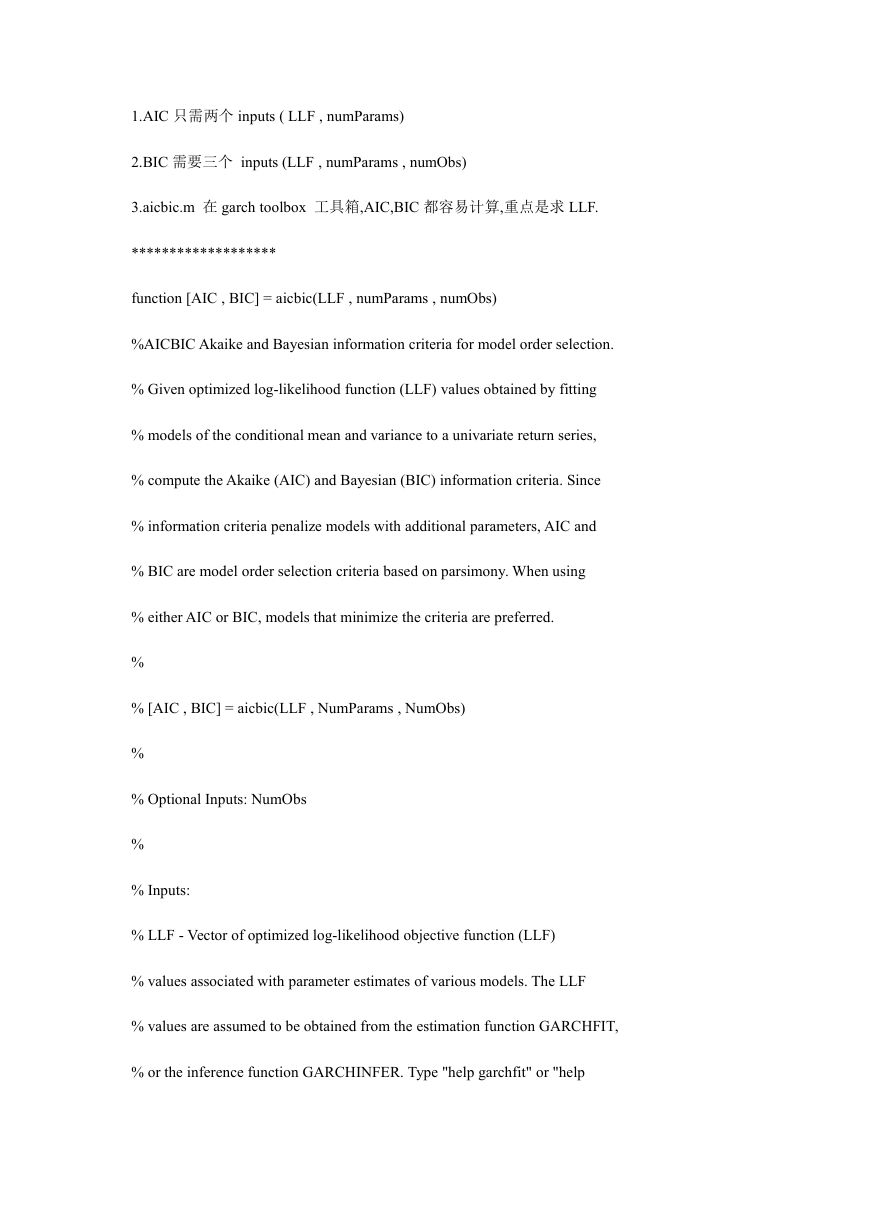
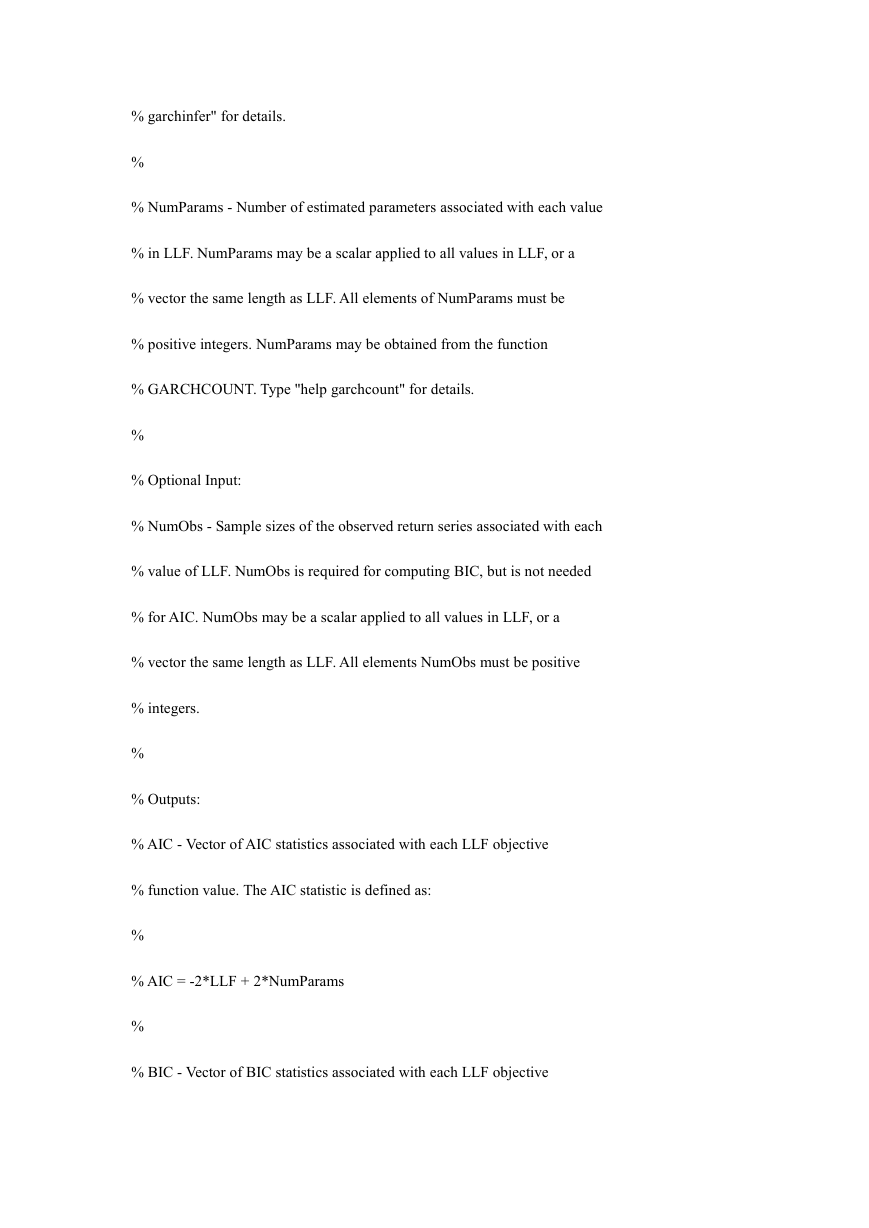
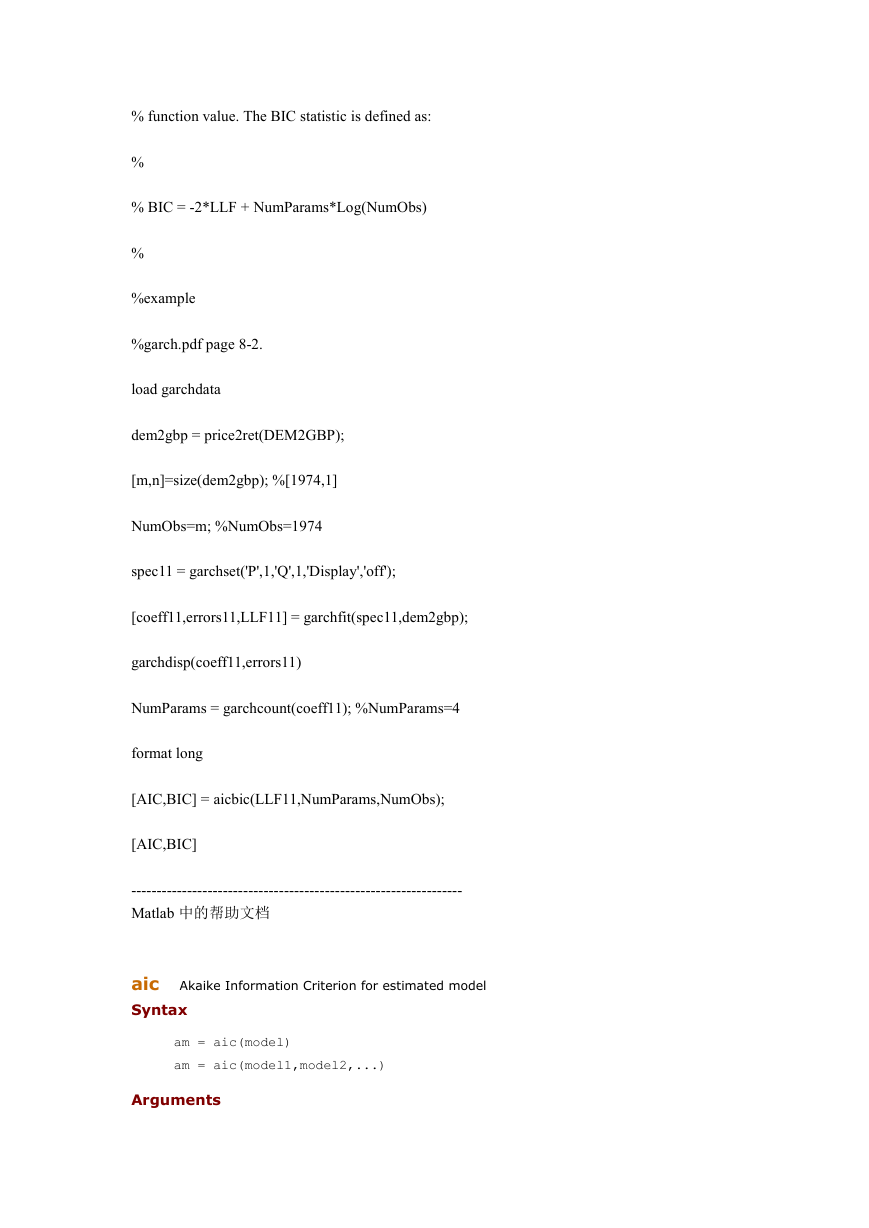
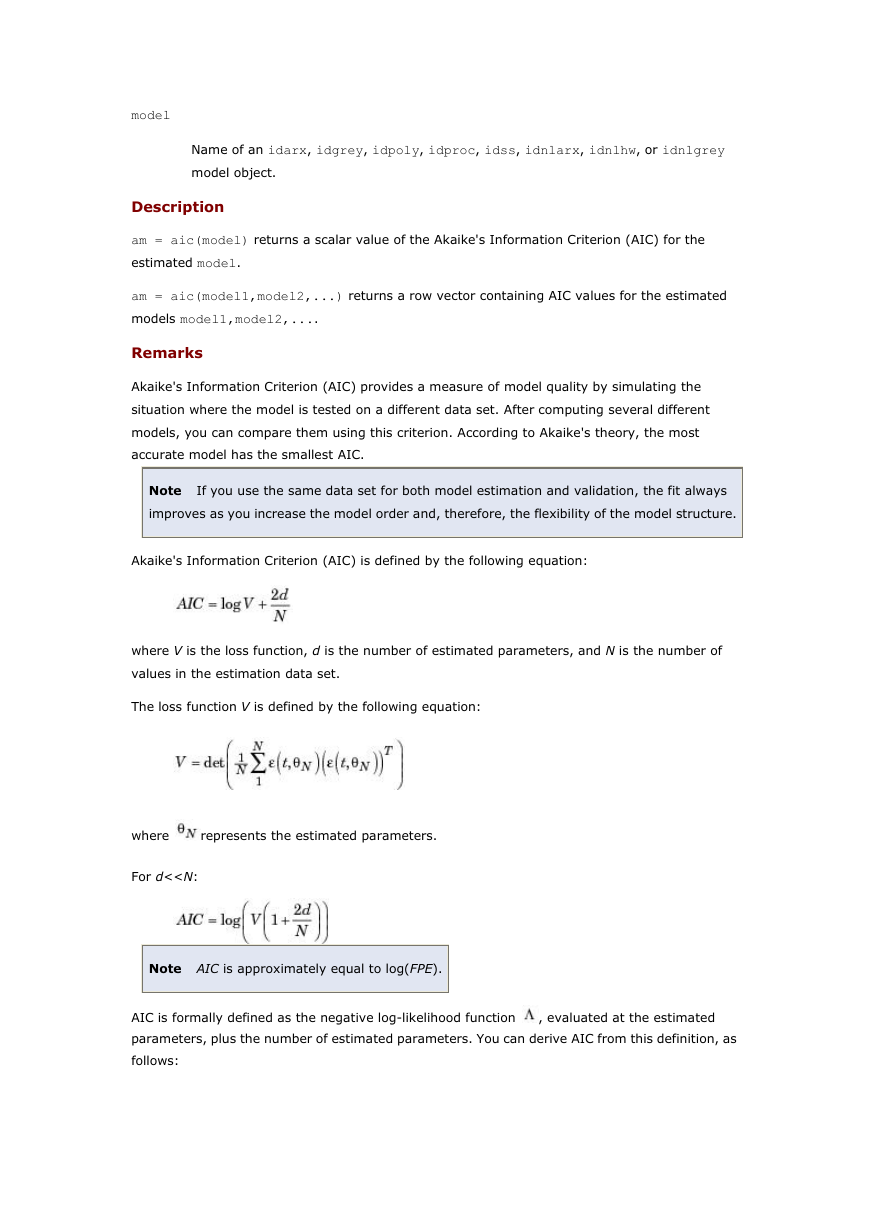
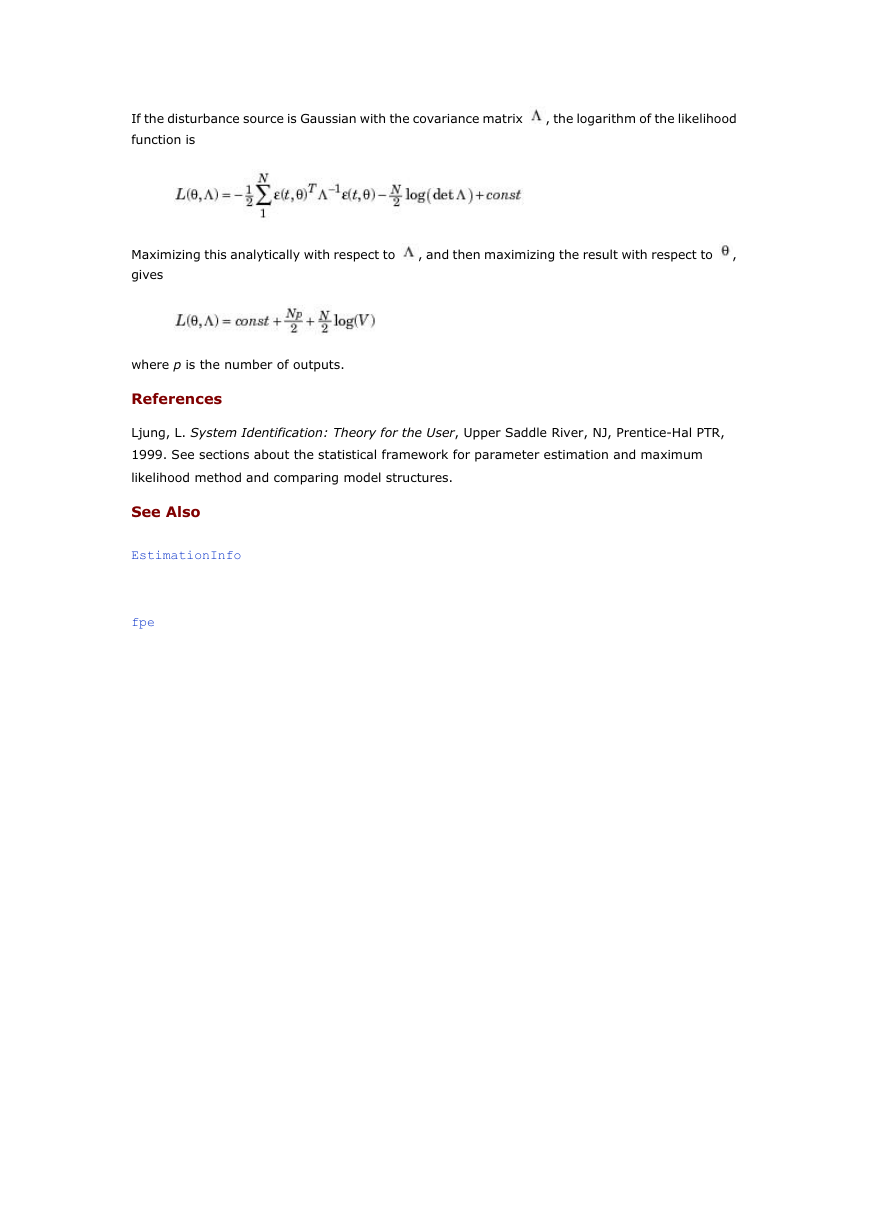





 2023年江西萍乡中考道德与法治真题及答案.doc
2023年江西萍乡中考道德与法治真题及答案.doc 2012年重庆南川中考生物真题及答案.doc
2012年重庆南川中考生物真题及答案.doc 2013年江西师范大学地理学综合及文艺理论基础考研真题.doc
2013年江西师范大学地理学综合及文艺理论基础考研真题.doc 2020年四川甘孜小升初语文真题及答案I卷.doc
2020年四川甘孜小升初语文真题及答案I卷.doc 2020年注册岩土工程师专业基础考试真题及答案.doc
2020年注册岩土工程师专业基础考试真题及答案.doc 2023-2024学年福建省厦门市九年级上学期数学月考试题及答案.doc
2023-2024学年福建省厦门市九年级上学期数学月考试题及答案.doc 2021-2022学年辽宁省沈阳市大东区九年级上学期语文期末试题及答案.doc
2021-2022学年辽宁省沈阳市大东区九年级上学期语文期末试题及答案.doc 2022-2023学年北京东城区初三第一学期物理期末试卷及答案.doc
2022-2023学年北京东城区初三第一学期物理期末试卷及答案.doc 2018上半年江西教师资格初中地理学科知识与教学能力真题及答案.doc
2018上半年江西教师资格初中地理学科知识与教学能力真题及答案.doc 2012年河北国家公务员申论考试真题及答案-省级.doc
2012年河北国家公务员申论考试真题及答案-省级.doc 2020-2021学年江苏省扬州市江都区邵樊片九年级上学期数学第一次质量检测试题及答案.doc
2020-2021学年江苏省扬州市江都区邵樊片九年级上学期数学第一次质量检测试题及答案.doc 2022下半年黑龙江教师资格证中学综合素质真题及答案.doc
2022下半年黑龙江教师资格证中学综合素质真题及答案.doc